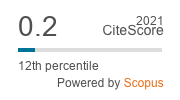Parámetros de laboratorio clínico en pacientes con la COVID-19
Palabras clave:
parámetros de laboratorio, COVID-19, SARS-CoV-2, biomarcadores.Resumen
Introducción: Conocer las alteraciones en exámenes de laboratorio clínico, es de utilidad en el diagnóstico y el progreso de pacientes con la COVID-19.
Objetivo: Describir los parámetros de laboratorio clínico en pacientes diagnosticados con la COVID-19.
Métodos: Estudio descriptivo en 82 pacientes hospitalizados con la COVID-19. Las variables analizadas fueron edad, sexo, comorbilidad, reporte de paciente, estado al egreso, hemoglobina, recuento de glóbulos blancos, conteo absoluto de neutrófilos, conteo absoluto de linfocitos, conteo de plaquetas, eritrosedimentación, dímero D, creatinina, urea, alanina aminotransferasa, aspartato aminotransferasa, γ-glutamil transpeptidasa, fosfatasa alcalina, lactato deshidrogenasa, relación neutrófilos/ linfocitos y de plaquetas/ linfocitos.
Resultados: La edad promedio fue de 55,61 ± 22,04, fue mayoría el sexo femenino (57,3 %), hipertensos (41,5 %), el 18,3 % reportados de grave y el 14,6 % falleció. La edad avanzada y la comorbilidad se asociaron al reporte de gravedad. Hubo disminución significativa de la hemoglobina, linfocitos; elevación de la eritrosedimentación, dímero D, creatinina, γ-glutamil transpeptidasa y lactato deshidrogenasa, sobre todo en graves. La relación neutrófilos/ linfocitos y de plaquetas/ linfocitos alertaron sobre el agravamiento del paciente y la posibilidad de fallecer.
Conclusiones: Los pacientes tenían una media de edad de 55,61, del sexo femenino, con hipertensión arterial; egresaron vivos, reportados de no graves. Disminuyen los valores medios de hemoglobina, conteo global de los linfocitos, sobre todo en graves; aumenta el dímero D, creatinina, ALT, AST, ALP, GGT, y LD. La relación neutrófilos/ linfocitos y de plaquetas/ linfocitos muestran valores medios altos, sobre todo en graves y en quienes fallecieron.
Descargas
Citas
2. Ferrari D, Motta A, Strollo M, Banfi G, Locatelli M. Routine blood tests as a potential diagnostic tool for COVID-19. Clin Chem Lab Med. 2020 [acceso: 04/06/2020];58(7):1095-9. Disponible en: https://www.degruyter.com/configurable/contentpage/journals$002fcclm$002f5-8$002f7$002farticle-p1095.xml
3. Esquivel Sosa L, Martínez-Fortún Amador M, Águila Carbelo M. Pandemias de 1918 y 2020, similitudes y diferencias. Apuntes del Dr. José Andrés Martínez-Fortún. Acta Médica del Centro. 2020 [acceso: 30/09/2020];14(3):[aprox. 9 p.]. Disponible en: https://www.revactamedicacentro.sld.cu/index.php/amc/article/view/1309
4. Espinosa Brito A. COVID-19: rápida revisión general. Anales de la Academia de Ciencias de Cuba. 2020 [acceso: 24/06/2020];10(2): [aprox. 6 p.]. Disponible en: https://www.revistaccuba.sld.cu/index.php/revacc/article/view/828
5. Terpos E, Ntanasis-Stathopoulos I, Elalamy I, Kastritis E, Sergentanis T, Politou M, et al. Hematological findings and complications of COVID-19. Am J Hematol. 2020 [acceso: 24/06/2020]; 95(7)1-14. Disponible en: https://onlinelibrary.wiley.com/doi/full/10.1002/ajh.25829
6. Liu Y, Sun W, Guo Y, Chen L, Zhang L, Zhao S, et. al. Association between platelet parameters and mortality in coronavirus disease 2019: Retrospective cohort study. Platelets. 2020 [acceso: 24/06/2020];31(4): 490-6. Disponible en: https://doi.org/10.1080/09537104.2020.1754383
7. Yang A, Liu J, Tao W, Lib H. The diagnostic and predictive role of NLR, d-NLR and PLR in COVID-19 patients. Int Immunopharmacol. 2020 [acceso: 8/11/2020];88(106504): [aprox. 10 p.]. Disponible en: https://www.ncbi.nlm.nih.gov/pmc/articles/PMC7152924/
8. Acosta G, Escobar G, Bernaola G, Alfaro J, Taype W, Marcos C, et al. Description of patients with severe covid-19 treated in a national referral hospital in Peru. Rev Peru Med Exp Salud Publica. 2020 [acceso: 8/11/2020]; 37(2): 253-8. Disponible en: https://rpmesp.ins.gob.pe/index.php/rpmesp/article/view/5437/3713
9. Solís Cartas U, Martínez Larrarte JP. Opciones terapéuticas al síndrome de liberación de citocinas en pacientes con la COVID-19. Rev Cubana Med Milit. 2020 [acceso: 29/09/2020];49(3): e0200783. Disponible en: https://www.revmedmilitar.sld.cu/index.php/mil/article/view/783
10. Ferrari D, Cabitza F, Carobene A, Locatelli M. Routine blood tests as an active surveillance to monitor COVID-19 prevalence. A retrospective study. Acta Bio Med. 2020 [acceso: 9/11/2020];91(3): e2020009. Disponible en: https://www.mattioli1885journals.com/index.php/actabiomedica/article/view/10218
11. Pérez Fernández GA. ¿Es la comorbilidad cardiovascular la causante de la elevación de la proteína C reactiva en pacientes positivos a la COVID-19? Acta Médica del Centro. 2020[30/09/2020];14(3): [aprox. 8 p.]. Disponible en: https://www.revactamedicacentro.sld.cu/index.php/amc/article/view/1294
12. Parra Izquierdo V, Florez Sarmiento C, Romero Sanchez MC. Inducción de "tormenta de citocinas" en pacientes infectados con SARS- CoV-2 y desarrollo de COVID-19. ¿Tiene el tracto gastrointestinal alguna relación en la gravedad? Rev Colomb Gastroenterol. 2020 [acceso: 29/09/2020];35(1):21-9. Disponible en: https://doi.org/1022516/25007440.539
13. Liu J, Liu Y, Xiang P, Pu L, Xiong H, Li C, et al. Neutrophil-to-Lymphocyte Ratio Predicts Severe Illness Patients with 2019 Novel Coronavirus in the Early Stage. J Transl Med. 2020 [acceso: 29/09/2020];18(206):2-12. Disponible en: https://europepmc.org/backend/ptpmcrender.fcgi?accid=PMC7237880&blobtype=pdf
14. Basbus L, Lapidus MI, Martingano I, Puga MC, Pollán J. Índice neutrófilo-linfocito como factor pronóstico de COVID-19. Medicina. 2020 [acceso: 29/10/2020]; 80(III):1-6 Disponible en: https://www.medicinabuenosaires.com/indices-de-2020/volumen-80-ano-2020-s-3-indice/indice_covid/
15. Ballesté R. El laboratorio en el diagnóstico de COVID-19 en Uruguay: resultados y desafíos. Rev. Méd. Urug. 2020 [acceso: 29/09/2020];36(3):1-8. Disponible en: https://www.scielo.edu.uy/scielo.php?script=sci_arttext&pid=S1688-03902020000300001&lng=es
Publicado
Cómo citar
Número
Sección
Licencia
Aquellos autores/as que tengan publicaciones con esta revista, aceptan los términos siguientes:- Los autores/as conservarán sus derechos de autor y garantizarán a la revista el derecho de primera publicación de su obra, el cual estará simultáneamente sujeto a la Licencia de reconocimiento de Creative Commons. Los contenidos que aquí se exponen pueden ser compartidos, copiados y redistribuidos en cualquier medio o formato. Pueden ser adaptados, remezclados, transformados o creados otros a partir del material, mediante los siguientes términos: Atribución (dar crédito a la obra de manera adecuada, proporcionando un enlace a la licencia, e indicando si se han realizado cambios); no-comercial (no puede hacer uso del material con fines comerciales) y compartir-igual (si mezcla, transforma o crea nuevo material a partir de esta obra, podrá distribuir su contribución siempre que utilice la misma licencia que la obra original).
- Los autores/as podrán adoptar otros acuerdos de licencia no exclusiva de distribución de la versión de la obra publicada (p. ej.: depositarla en un archivo telemático institucional o publicarla en un volumen monográfico) siempre que se indique la publicación inicial en esta revista.
- Se permite y recomienda a los autores/as difundir su obra a través de Internet (p. ej.: en archivos telemáticos institucionales o en su página web) antes y durante el proceso de envío, lo cual puede producir intercambios interesantes y aumentar las citas de la obra publicada.





